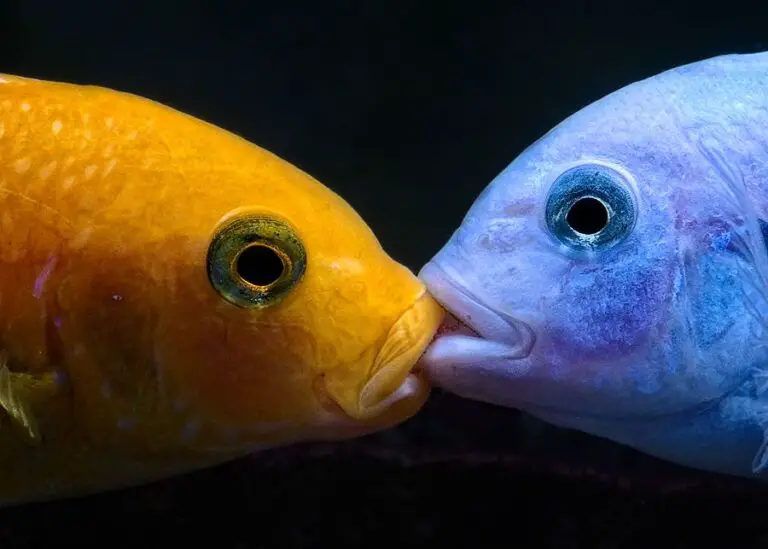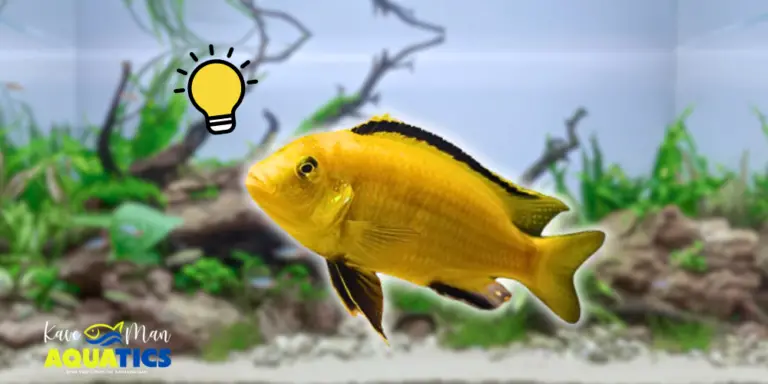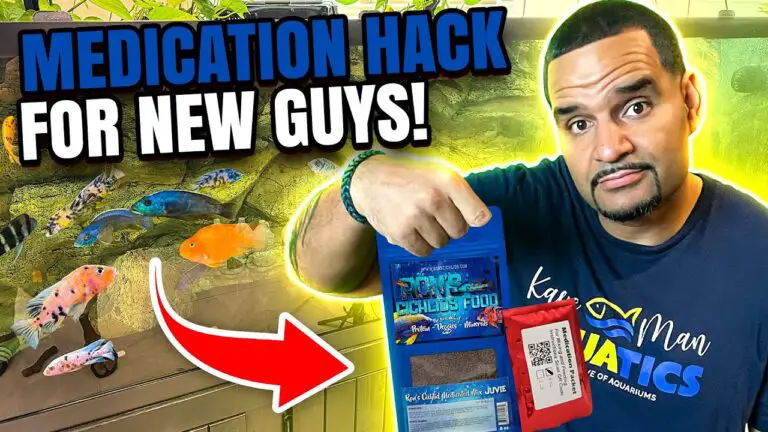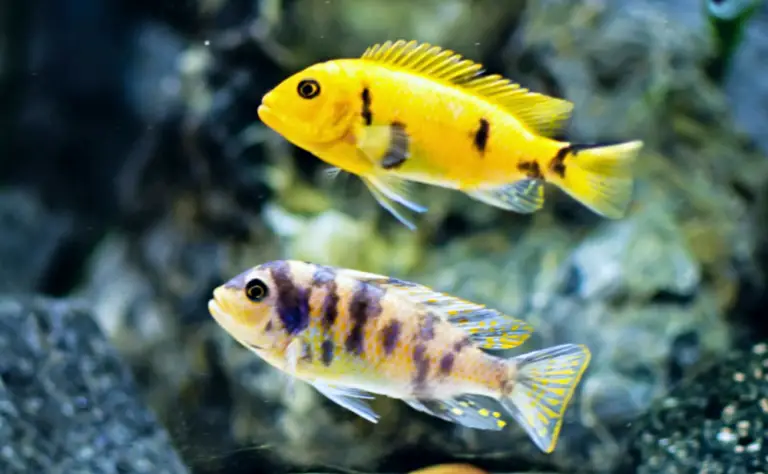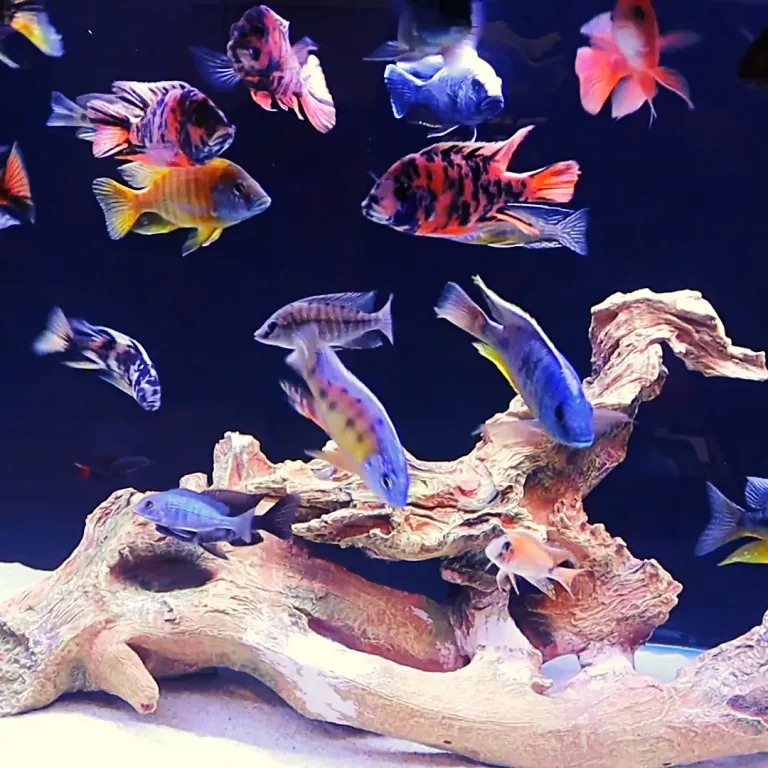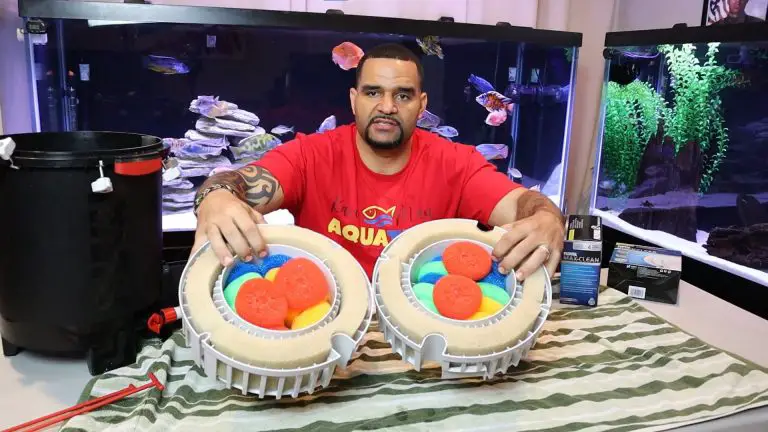7 Small African Cichlids We Recommend
Small African Cichlids? Yes! When you think of African Cichlids, one of the first things that come to your mind is the medium to large-sized, brightly-colored fish. A general rule of thumb is to think big if you want to keep them.
Of course, the size of your tank will be greatly influenced by the size of the species you choose.
But let’s say you have limited space and a small budget, plus, you would like to get to know African Cichlids better. It’d be wiser to choose a smaller species to begin with.
But which African Cichlids stay small? To help you out, we’ve compiled a list of some of the smallest African Cichlid species as well as a couple of points to consider. But before we start…
Watch my latest African Cichlid Unboxing below
7 Small African Cichlids
African Shell Dwellers
The first small African Cichlids you can consider are African Shell Dwellers. These little guys come from Lake Tanganyika – the world’s second largest freshwater lake in the East African Rift Valley.
They get their common name from the snail shells they collect for breeding and shelter purposes. The snail shells that they prefer are about 2 inches in diameter. This size cap means that most African Shell Dwellers reach a maximum of about 2.5 inches.
Those are some small African Cichlids! Some popular Shell Dwellers you might find in the fishkeeping community are:
Neolamprologus Brevis: These guys have a stockier body shape and a bulldog-like face. A male and female that are paired together will sometimes share the same shell, which is unusual among Shell Dwellers (but we think that’s quite cute). If you want to know more about them, check out their species profile.
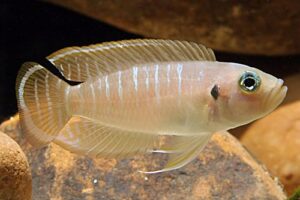
Neolamprologus Multifasciatus: Better known as Multies. They are considered one of the smallest African Cichlids there is, measuring in at 2 inches. They have thin, vertical striping and bright blue eyes. Here are their species profile.
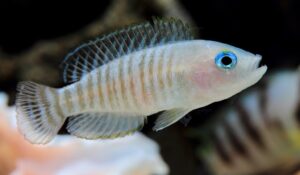
Lamprologus Ocellatus: A popular fish due to its small size, appearance, and intelligence. There are several varieties of Ocellatus, but the gold type is one of the most colorful. Their maximum size is 2.3 inches. Check out their species profile.
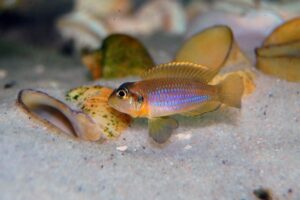
Neolamprologus Similis: Similis look almost exactly like Multies, however, Similis stripes go all the way to their eyes instead of stopping behind the gill plate. This very small fish grows to a maximum length of 2 inches. Here are their species profile.
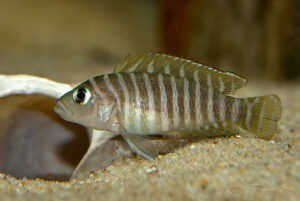
Demasoni Cichlids
Other small African Cichlids are the Demasoni Cichlids (Pseudotropheus Demasoni) that are found in Lake Malawi. Their appearance is eye-catching, to say the least. They boast a zebra-type pattern with various shades of blue.
These guys are amongst the smallest of African Cichlids as they don’t grow any larger than 3 inches. A mini Mbuna that should definitely not be overlooked. If you want to know more about these little guys, here is their species profile.
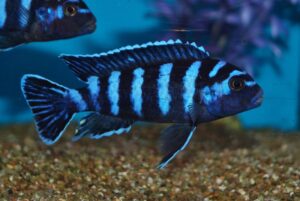
Kribensis Cichlids
A favourite of many fishkeepers, the Kribensis (Pelvicachromis Pulcher) is a great choice as a small African Cichlid – especially for new hobbyists. They originate in the African water of southern Nigeria and the coastal areas of Cameroon.
A colorful dwarf Cichlid which is also known as Rainbow Kribs. During the spawning season, the females show off their cherry-red bellies. Even when not spawning, these are attractive fish that can be found in a variety of colors such as yellow, red, green, and blue.
Kribensis males will grow to a maximum of 4 inches whereas the females will grow to only 3 inches. Here are their species profile.

Ruby Green Cichlids
The last small African Cichlid that we want to mention is the Ruby Green Cichlid (Haplochromis sp. “Ruby Green”). The Haplochromis originates from Lake Kyoga and Nawampasa in Uganda.
The Ruby Green Cichlids get their name from the male’s vibrant green coloring which attracts the females. They come in other flashy colors such as red and yellow.
Male Ruby Green Cichlids will grow to a maximum of 4 inches and the females will grow to about 3 inches. Of course, here is their species profile (Haplochromis Latifasciatus).
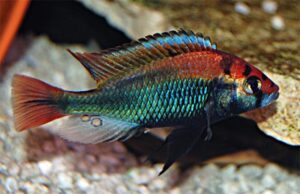
Things to Consider
Now, before you buy any of these small African Cichlids, there are some things to consider. If you’re unfamiliar with African Cichlids, starting small will be best for you, hence this list. But, there is more.
Research
There are so many types of African Cichlids out there (big and small), more than what we can fit into one article. That said, you need to do your research before buying your fish (always). Learn more about the genus, the species, their origin, their habitat, diet and nutritional needs, behavior, and their preferred water parameters (including the correct filtration).
Here are the top 10 things you must know about African Cichlids.
The Tank
Just because some of these small African Cichlids grow up to a maximum of 2 inches, doesn’t mean you can chuck them into a 10 gallon tank. Since African Cichlids are an active and aggressive species, they should have plenty of space.
Always consider the size of your African Cichlid once they become full grown adults! Also ask yourself whether you’ll be adding more fish to tank which will also influence the tank’s size.
So how big should a tank be for small African Cichlids? Although you can keep them in a 30 gallon tank, ideally a 55 gallon tank would be the best option to have your Cichlids thrive. Especially as a new fishkeeper. A larger water volume allows you to make some mistakes and correct them without losing your fish.
Another plus about a bigger tank is that it offers better basic predisposition for ensuring a peaceful living area for your fish. More space, more freedom. This creates a safe and stress-free environment for your fish.
Conclusion
Although their size is very small, they can be a very attractive addition to your home. We hope that the fish we mentioned above will interest you. As always, we recommend to do your research on the fish and their requirements in order to live a happy and healthy aquatic life.
KaveMan Aquatics offers a course specifically focused on African Cichlids.


